“Little Barracks by the Sea” Population: 2,000
Old name: Iasos
The first thing to say is that the remains of ancient İasos at Kıyıkıslacık are simply fantastic, worth a day-long detour on anyone’s itinerary. The second thing to say is that the journey to get to them is also a delight, taking you into unexpectedly rural Turkey within a day’s drive of what it’s probably fair to call the Bodrum conurbation.
The actual settlement here is both small and strung out. If coming by bus you need to be careful that you don’t overshoot and find yourself in Zeytinlikuyu, a depressingly neglected suburb where a small strip of pleasant sand overlooking a lovely bay is ruined (at least for me) by the rubbish piled up immediately behind it.
Siteler, between Zeytinlikuyu and Kıyıkıslacık, is just what its name suggests – an entire suburb of second-home developments with the smart İasos Hotel rather strangely positioned in the middle.
But to revert to Kıyıkıslacık itself, as you come into the village you’ll see to the right of the road the broken remains of a brick tower, the Bakdakhin Mausoleum, reminiscent of one of the tower-tombs of Palmyra in Syria. It appears to date back to the 2nd century AD. Across the road is a very attractive stone-surrounded pool that I assume to have been a sacred spring. 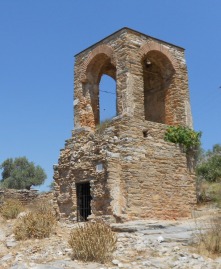
The bus then drives down to the harbour but only goes into it if you say you want the ruins (örenyeri); otherwise, it merely skirts it, making it even easier to overshoot your stop.
Backstory
Iasos was probably settled by Peloponnesians from Argos with help from settlers at Miletus. They are likely to have colonised the peninsula area, driving out the Carians who had probably been there since before the 9th century BC. In 412 BC the site was seized by Spartans acting in concert with the Persians. It is likely that the site was then given a fortifying wall by King Mausolus of Bodrum (it survived into the 19th century). Inevitably, it eventually succumbed to Roman rule. The site appears to have been abandoned in the 15th or 16th century.
Around the lower site
The harbour is small and not particularly exciting but standing in it you can look across at a headland crowned by the remains of a castle built originally by the Knights of St John. Its walls are in great condition despite their age because it was later reused by a local lord called Asim, after whom it was renamed Asim Kalesi.
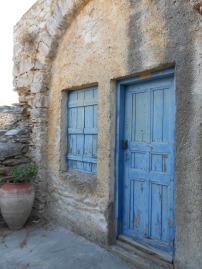 Behind the harbour on the land side stand a number of huge almost house-like structures that were once Roman tombs. Most have since found new uses for storage not least for some of the finds from İasos.
Behind the harbour on the land side stand a number of huge almost house-like structures that were once Roman tombs. Most have since found new uses for storage not least for some of the finds from İasos.
If you stroll round the harbour towards the headland you will see a small kiosk on the left which may have become a ticket office by now. Beside it a short track runs up to an arch set into a long stretch of wall whose precise purpose is unclear – George Bean postulated that it might have protected a military encampment of the 5th century BC. On the far side you will find yourself in an enormous agora, still with some of its flagstone floor and elegant Corinthian columns in place.
To the right of the gate is the partially reconstructed bouleterion (council chamber), artfully designed to look in at the agora rather than out at the sea so that none of the great and good would be distracted by the view.
The centre of the agora has been dug up to uncover much earlier remains although there is nothing to explain the assorted walls and holes to you.
On the lefthand side of the agora are the walls of a second medieval castle.
Around the upper site
On its own all this would be impressive enough but if you return to the harbour and keep walking round towards the headland you will see a stretch of ancient wall that has now been co-opted to serve as someone’s haywain.
Take the path that cuts in beside it and walk as far as the small (filthy) bay where stepping stones might let you wade out to the romantic ruin standing right in the sea which probably controlled access to the harbour in Roman times. Inland from here the path starts up the hill to the ruins on the acropolis.
Take this path rather than following the one along the perimeter of the headland since this, after passing several stretches of wall and what look like the remains of a bathhouse, ends up at a stretch of barbed-wire fence. Climbing up to the castle from here is not easy; it’s much better to use the proper path.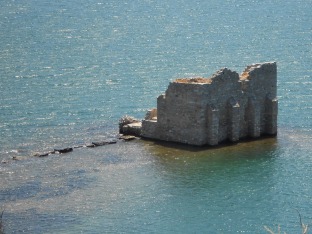
The path rises slowly and on the right you will see an area of excavations that have since been covered with a corrugated-iron roof. Once again there’s barbed-wire but if you don’t mind risking climbing over it you will see the remains of some fine houses with impressive geometric mosaic “carpets” in black and white.
Climbing a little higher brings you to a structure that looks out over the sea to the romantic little ruin sitting in it. This could be a library building although there’s nothing there to say so.
Further up the path brings you to the impressive walls of the castle with pieces of older masonry incorporated into them. Unfortunately there’s no access to the interior. In front of the castle can be seen the foundations of a basilican church.
The path then winds right round the acropolis to bring you out by the remains of the unexcavated theatre. Its tiered seats appear to be buried although some parts of the stage area are uncovered.
If you scramble down beside it a bit you will find the remains of what may be houses and will be able to see that the retaining wall of the theatre has survived much better than its interior. From here you can, if you wish, scramble down the hillside and then follow the path back around the lower headland in a clockwise direction, a pleasant walk even if you’re not much interested in ruins.
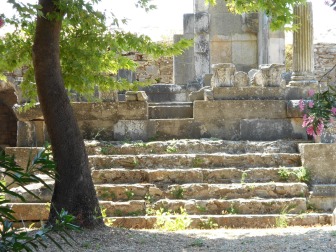 The rest of the lower site
The rest of the lower site
Back at the harbour you should follow the Zeytinlikuyu road uphill until you reach the Iasos Kahve on the left and a nameless teahouse on the right.
Beside the teahouse a path runs right and comes eventually to the so-called Balıkpazarı (Fish Market). According to the Blue Guide this is actually a Roman temple-tomb with stoas erected right round the stepped podium of the temple. The name of the person so lavishly commemorated is sadly lost to history. In theory this building functions as a museum but I’d be surprised if you find it open.
To one side are the remains of what looks like a stone tomb while along one face of the building (in the grounds of an abandoned house) there are a string of arches belonging to a much older building on the site about which, as you’ll expect by now, there is no information.
Many of the finds from İasos are housed in Milas Museum including the headless statue of Artemis from the temple beside the agora and one of the two rams that accompanied it. 
Eating
There are a couple of small fish restaurants here which, while nothing special, do let you make a day of your visit.
Sleeping
In Kıyıkıslacık itself there are several small pensions including the long-lived Ercan and Iasos, both looking out over the harbour. In Zeytinlikuyu the Antik Otel and Yasmin Pansiyon are both popular with Turkish families and would be quite pleasant were it not for the litter behind the beach.
Transport info
Timetabled minibuses to Kıyıkıslacık leave Milas’s town-centre otogar roughly every two hours. Tell the driver you want to get out at the ruins and make a careful note of the return times which are posted in a grim little building near the ticket office for the ruins.
If you want to you can get out of the bus when it returns to the main Milas-Söke road and hop one of the eastward-bound Selimiye dolmuşes that pass the entrance to the ruins at Euromos.
Day trip destinations
Read more about my visit: http://turkeyfromtheinside.com/blogbloggingaboutturkey/entry/82-the-lost-tourists-of-kiyikizlacik.html
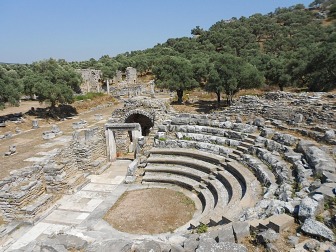 Bouleterion and Agora
Bouleterion and Agora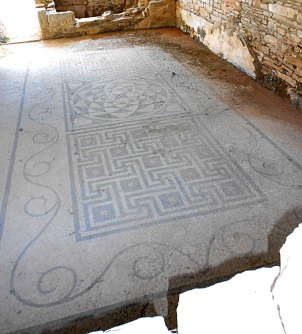 İasos house with mosaic “carpet”
İasos house with mosaic “carpet” 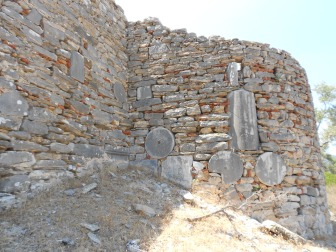 Medieval castle on the Acropolis reusing older materials
Medieval castle on the Acropolis reusing older materials


